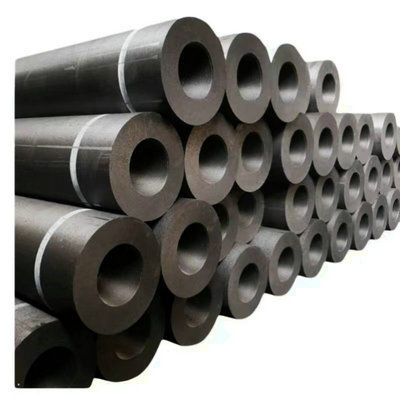Graphite electrodes play a crucial role in modern metal refining and smelting processes. Made of high-quality, highly-conductive graphite material, these electrodes are used as a conductive medium in electric arc furnaces (EAFs) and ladle furnaces (LFs). Their unique characteristics and properties make them the ideal choice for high-temperature, high-current applications.
One of the most important features of graphite electrodes is their excellent thermal stability. They can withstand extremely high temperatures without losing their structural integrity or conductivity. This is essential in metal refining and smelting processes where the temperatures can reach several thousand degrees Celsius. Graphite electrodes can effectively handle these extreme conditions, ensuring efficient and reliable operation of the furnaces.
Another key characteristic of graphite electrodes is their high resistance to oxidation and corrosion. During the metal refining process, various chemical reactions take place, often involving highly corrosive materials. Graphite electrodes’s resistance to oxidation and corrosion ensures their longevity and consistent performance in these harsh environments.
Additionally, graphite electrodes have a low coefficient of thermal expansion. This means that they exhibit minimum dimensional changes when exposed to temperature variations. Such stability is vital in industrial applications, as any expansion or contraction could result in mechanical stress and potential damage to the electrodes. The low coefficient of thermal expansion of graphite electrodes guarantees their structural integrity and durability even in extreme operating conditions.
The exceptional conductivity of graphite electrodes is also worth highlighting. Graphite is a highly conductive material, allowing for efficient and effective transfer of electrical energy within the furnace. This conductivity is essential in EAFs and LFs, where large amounts of electrical current are required to melt the metal and carry out the refining process. The high conductivity of graphite electrodes ensures minimal energy losses and optimal performance of these furnaces.
Graphite electrodes offer various benefits and advantages over other materials commonly used in metal refining and smelting processes. For instance, compared to copper electrodes, graphite electrodes have a lower cost and can handle higher temperatures. They are also more resistant to chemical reactions, making them suitable for a wider range of applications. Furthermore, graphite electrodes have a longer lifespan and require less maintenance, leading to significant cost savings in the long run.
Graphite electrodes possess a unique set of characteristics that make them indispensable in modern metal refining and smelting processes. Their thermal stability, resistance to oxidation and corrosion, low coefficient of thermal expansion, and excellent conductivity set them apart from other materials. Combined with their cost-effectiveness and long lifespan, graphite electrodes are the preferred choice for high-temperature, high-current applications in industries worldwide. Whether in electric arc furnaces or ladle furnaces, graphite electrodes play a vital role in ensuring efficient, reliable, and sustainable metal refining.
Post time: Jul-11-2023







